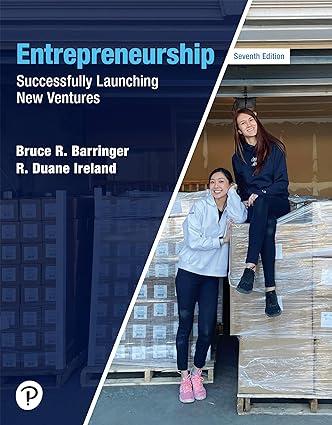As noted in this text, the Maker Movement refers to the renewed interest in the United States
Question:
As noted in this text, the Maker Movement refers to the renewed interest in the United States and elsewhere for people to invent, design, and make things in their homes or in collaborative workspaces. It is an umbrella term that covers artisans that make things such as crafts, jewelry, and clothing to engineering-oriented people who focus on electronics, robotics, three-dimensional (3D) printing, and more advanced projects. There are a growing number of makerspaces, FabLabs, and TechShops popping up across the country that accommodate both groups. These facilities are increasing in numbers in other countries as well, including Australia, China, France, and the United Kingdom, among others. Some of the products made in these places are inventions that are eligible for intellectual property protection. A makerspace is a collaborative workspace that is usually inside a school, library, or a separate public or private facility. In these workspaces, people have access to the types of equipment needed to experiment with ideas and/or make physical prototypes. These spaces include 3D printers, laser cutters, soldering irons, wood lathes, craft-making tools, and sewing machines. For a few dollars an hour, participants have access to machines that cost thousands of dollars. Fab Labs and Tech Shops are like makerspaces except they are trademarked names for specific types of makerspaces. A foundation (Fab Foundation) governs one while a corporation (Tech Shop) governs the other. Typically, experienced makers or inventors who are working on more advanced projects use Fab Labs’ and Tech Shops’ facilities. Some people become makers simply for the joy of inventing. For example, Make magazine holds Maker Faires across the country where tech enthusiasts and others showcase their experiments, projects, and the things they have made. Some of the inventions have commercial potential. In these cases, to bring an invention to market, the inventor can either start a business or try to sell or license the invention to an existing company. An increasing number of companies now have formal processes in place for inventors to submit their ideas. Companies know there are independent makers out there, so why not tap into their creative potential? If a company buys an invention from someone, that is a one-time transaction. If a company licenses a product, then the inventor usually receives an up-front payment and an ongoing royalty payment of 5 to 15 percent of the gross sales.....
Discussion Questions:
1. Identify the makerspace, Fab Lab, or Tech Shop that is nearest where you live currently. Describe the equipment that is available and the program the facility offers.
2. Why do you think companies are increasingly open to ideas from independent inventors?
3. Find an idea submission site for a company we did not mention in the feature (there are many such sites from companies throughout the world). Describe how to submit an invention to the company. What appear to be the keys to a company’s decision to accept an idea submitted to it?
4. In most cases, do you think inventors and entrepreneurs receive fair treatment when they sell or license a product to a large company? What steps should entrepreneurs take to make sure they receive a reasonable deal from the larger firm?
Step by Step Answer:

Entrepreneurship Successfully Launching New Ventures
ISBN: 9780138091828
7th Edition
Authors: Bruce R. Barringer, R Duane Ireland





